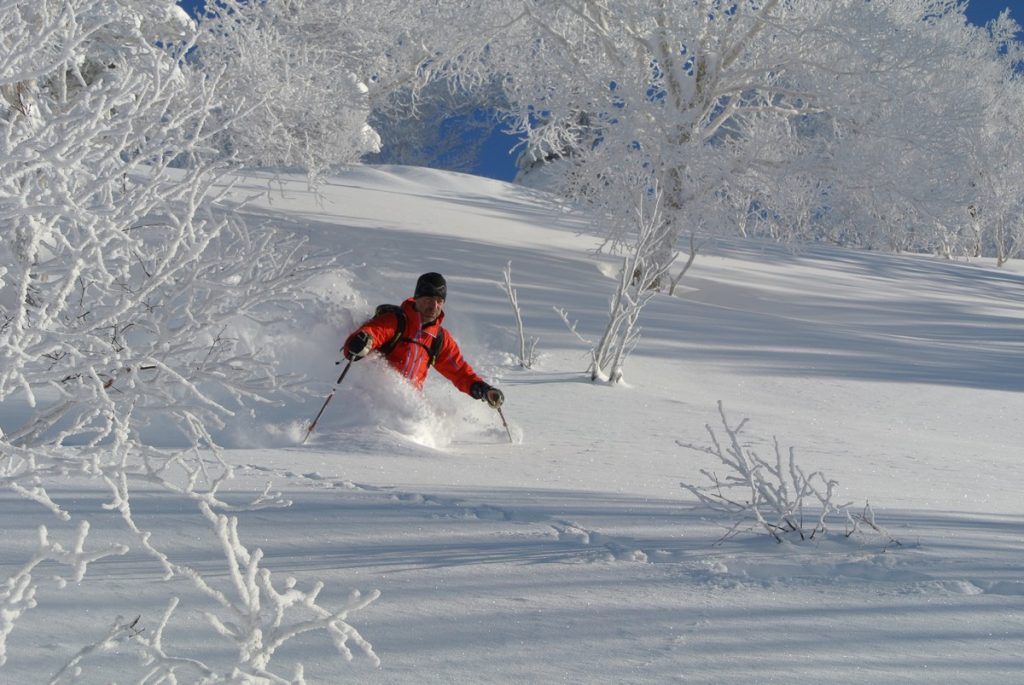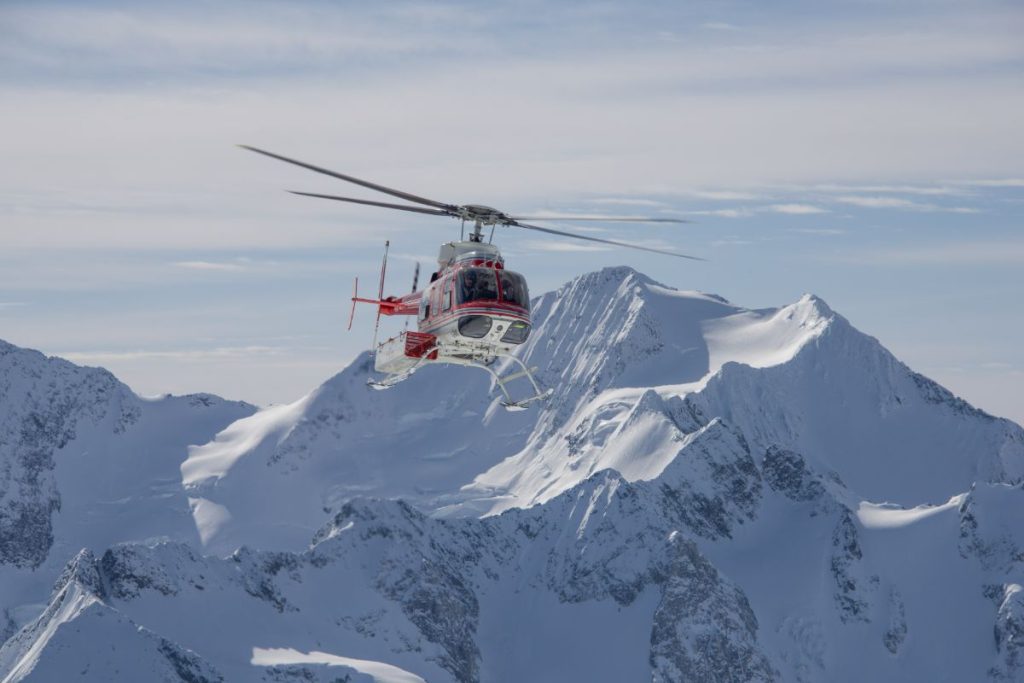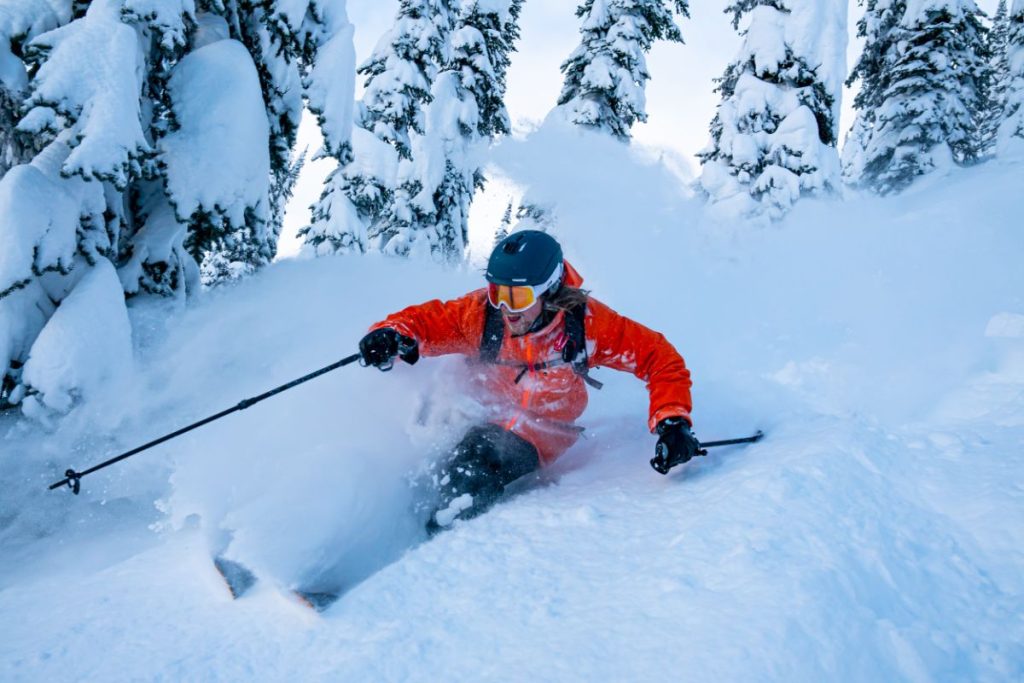If taking on challenging terrain sounds like a thrilling adventure, then off-piste skiing may just be the ideal outdoor sport for you. Venturing outside the boundaries of standard ski resorts can be a rewarding experience, allowing you to leave behind the groomed slopes and instead make tracks across the fresh snow of the backcountry.
For invigorating off-piste and heli skiing experiences, Pure Powder is here to offer only the best skiing adventures for our guests. With over four decades of experience in sourcing the greatest off-piste and heli skiing trips, we strive to provide outdoor adventures organised with the highest care and attention.
In this quick read, we will be covering some frequently asked questions about off-piste skiing. Book your next big adventure with Pure Powder, and benefit from the expertise and efficiency that we contribute to every aspect of your skiing trip.
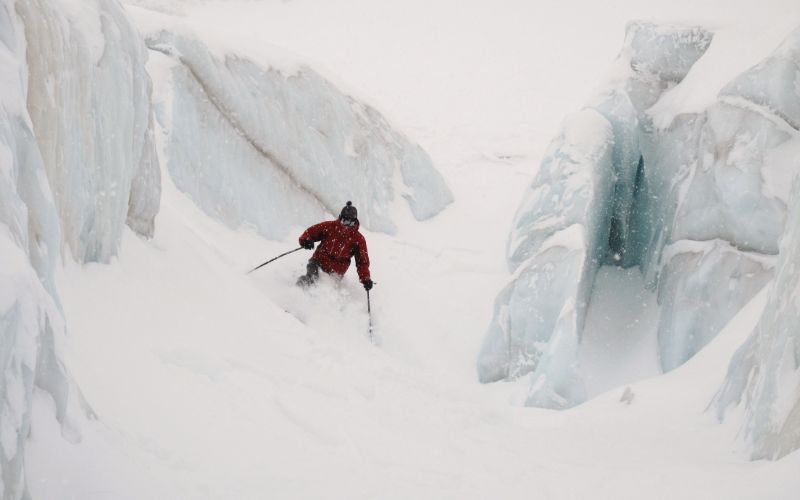
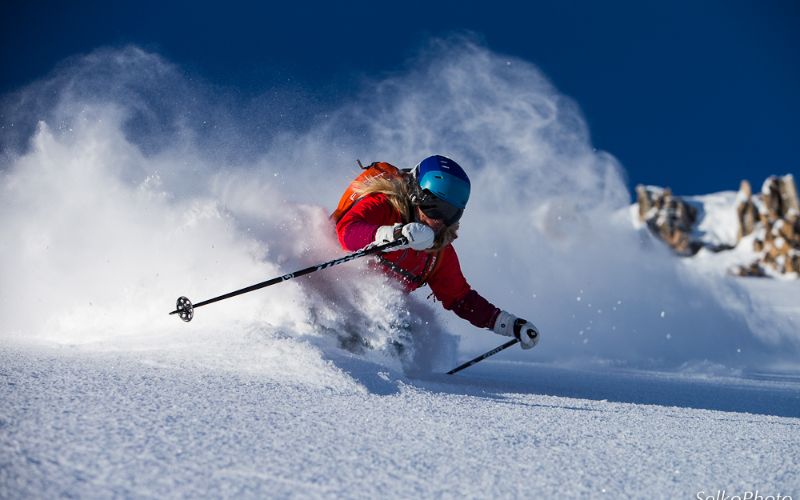
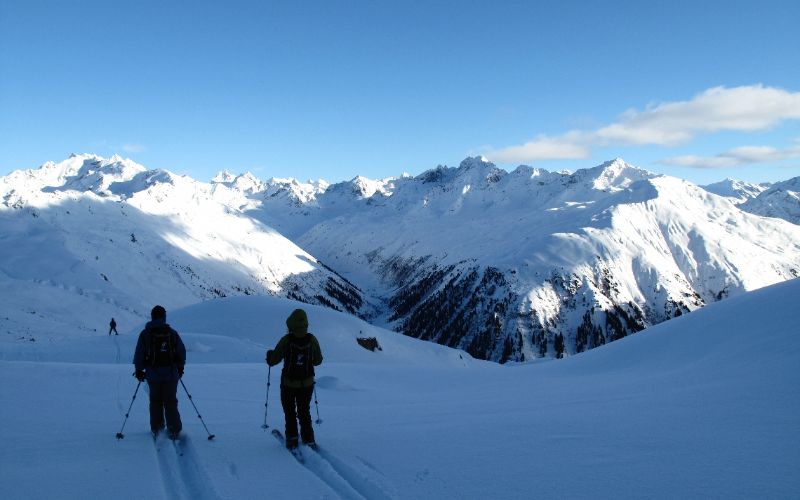

What Does Off-Piste Mean In Skiing?
While ski resorts offer designated runs, with groomed slopes and supervision, off-piste skiing refers to any skiing that takes place off of a groomed ski run. Off-piste skiing involves skiing in the backcountry, taking on fresh powder and unmarked trails that have not been groomed. The main appeal of off-piste skiing is the opportunity to explore natural terrain and ski through untouched snow.What Does On Piste VS. Off-Piste Mean?
On Piste skiing refers to skiing taking place on designated runs, deemed suitable by the ski resort. These areas of snow have been prepared for skiers and are the designated best routes down the mountain – usually highlighted on the resort’s trail map. In contrast, off-piste skiing takes place outside of these designated runs.What Counts As Off-Piste?
Any skiing terrain that is outside of designated, groomed ski runs counts as off-piste. This includes terrain directly outside of designated ski runs as well as deep backcountry terrain – a popular choice for ski touring. Keep in mind, while some ski runs may be ungroomed so as to challenge skiers, these do not count as off-piste.
Does Off-Piste Not Mean Skiing?
Off-piste does refer to skiing. More specifically, it refers to skiing that takes place away from standard ski runs – on areas of snow that have not been prepared for skiing, rather than on groomed slopes or designated routes. Off-piste slopes are unmarked, unprepared for skiers, and are usually not under supervision – offering a private serenity to take in the raw natural surroundings.How Do You Ride Off-Piste?
Much of your successful off-piste adventure relies on speed. Moving too slowly over powder means you may slow down, sink, or get stuck. Skiing off-piste also requires a keen awareness of your surroundings and an understanding of your environment. It is important to remember that no single article can replace proper experience and training. Your safety off-piste is your responsibility – which is why professional instruction, safety requirements, and practiced technique is key. If you would like to try your hand at off-piste skiing, book a trip through us at Pure Powder and we will ensure, through decades-long experience, that you are paired up with the perfect ski trip to match your skill level.How Do You Learn To Ski Off-Piste?
Learning to ski off-piste takes time and training, but we have covered a few technical points to remember when taking on your first off-piste trip with Pure Powder. Pair Up: If you are tackling off-piste terrain for the first time, pair up with an experienced skiing partner or professional guide. You can also join an introduction programme for powder skiing first-timers when you book a trip through Pure Powder. We have partnered up with fantastic lodges and resorts to offer you unique trips specifically designed to teach you the fundamentals of skiing in deep snow. If you are interested in heli skiing and off-piste adventures, let Pure Powder lead the way and pair you up with the perfect skiing trip. Keep Your Speed: When skiing off-piste, speed is your friend. Keeping up a good speed is crucial for cruising through the fresh powder without hindrance. Moving too slowly could allow your skis to drag or sink – this, in turn, can make maintaining your balance difficult and can hinder your ability to turn. Keep A Steady Rhythm: Moving your body in a steady up-and-down motion will help you propel yourself forward at an even pace. Make sure to avoid fully standing up on your skis as this could cause you to lose balance. The right posture is essential for maintaining a steady rhythm and allows you more control over your descent. Falling And Getting Back Up: During off-piste skiing, a few tumbles are inevitable, especially when you are still learning the ropes. Falling into a deep patch of snow may be alarming, but it is important that you remain calm. Rather than trying to push yourself up with your hands – this can make you sink deeper into the snow – cross your poles into an “X” shape, holding the intersection with one hand and push yourself up from there. Patience And Practice: Nobody is an expert on their first try, so have a little patience with yourself and focus on furthering your abilities. The more effort you put into practicing, the faster your skills and confidence will grow. Don’t push yourself past your capabilities, but rather let yourself enjoy the process.Is Off-Piste Skiing Dangerous?
Off-piste skiing can be dangerous if you are not adequately prepared. There are a number of risk factors to consider when taking part in off-piste skiing, some of which include avalanches, unseen obstacles, and remote mountainous areas where rescue may be difficult should you require it. Unless you are a professional, it is always a good idea to go off-piste with a trained guide. Off-piste skiing involves skiing over untouched terrain and less controlled snow conditions. This terrain could include deep snow, steep slopes, narrow chutes, and other bumps along the way. The nature of off-piste skiing presents a more dangerous endeavour compared to your typical groomed slope but also offers fantastic freedom and an immense feeling of accomplishment. Here is a quick breakdown of some safety measures to consider when skiing off-piste: Avalanche Safety: Risk assessment is a practical and essential step to take when it comes to off-piste skiing. Your guide will be trained in both avalanche awareness and navigation, ensuring that you avoid triggering a downfall of snow during your trip. Safe off-piste skiing involves being aware of your environment and the weather. A simple change in weather can have a drastic impact on snowpack stability. For example, fresh powder on steeper slopes can be a possible risk. The snow may warm up under the sun, becoming moist and heavy, and then cascade down the hillside. In this situation, your guide may recommend sticking to slopes with less of a gradient where the risk of an avalanche is much lower. While mother nature may be unpredictable, taking certain safety measures will help you ensure a wholly successful and safe skiing trip. Get The Right Gear: Any ski enthusiast will understand the importance of good gear. The right equipment can help you maintain a level of safety while navigating natural terrain. A few off-piste essentials include an avalanche beacon, a probe, and a snow shovel. Knowing how to use your gear is equally important. Trust Your Guide: Off-piste snowpacks can sometimes be unpredictable, and your path can be littered with obstacles like trees, rocks, and cliffs. If you are fairly new to off-piste skiing, a reliable guide can help you navigate the ungroomed terrain. Skiing off-piste comes with a higher risk than skiing on the pistes, and this is why it is imperative that you book your off-piste trip with an experienced company like Pure Powder. We take pride in our ability to match our guests with the perfect ski trip – taking your requirements and needs into account. For exceptional service and satisfying results, book your next heli ski or off-piste trip through Pure Powder!Off-Piste Skiing Insurance
Securing off-piste insurance can prove difficult without a guide. Since skiing off-piste involves skiing outside of marked resort boundaries, certain insurance providers will not cover you. Furthermore, there are a few winter sport insurance packages that do cover off-piste skiing, but that does not necessarily mean that you will be covered for any and all forms of skiing activity beyond the pistes. It is always recommended to check the policy wording of whatever insurance provider you choose and make sure that your skiing activities are covered in the agreement. Read up on local skiing regulations where your skiing trip is set to happen. Knowing the rules will help you avoid invalidating any claims you need to make.
